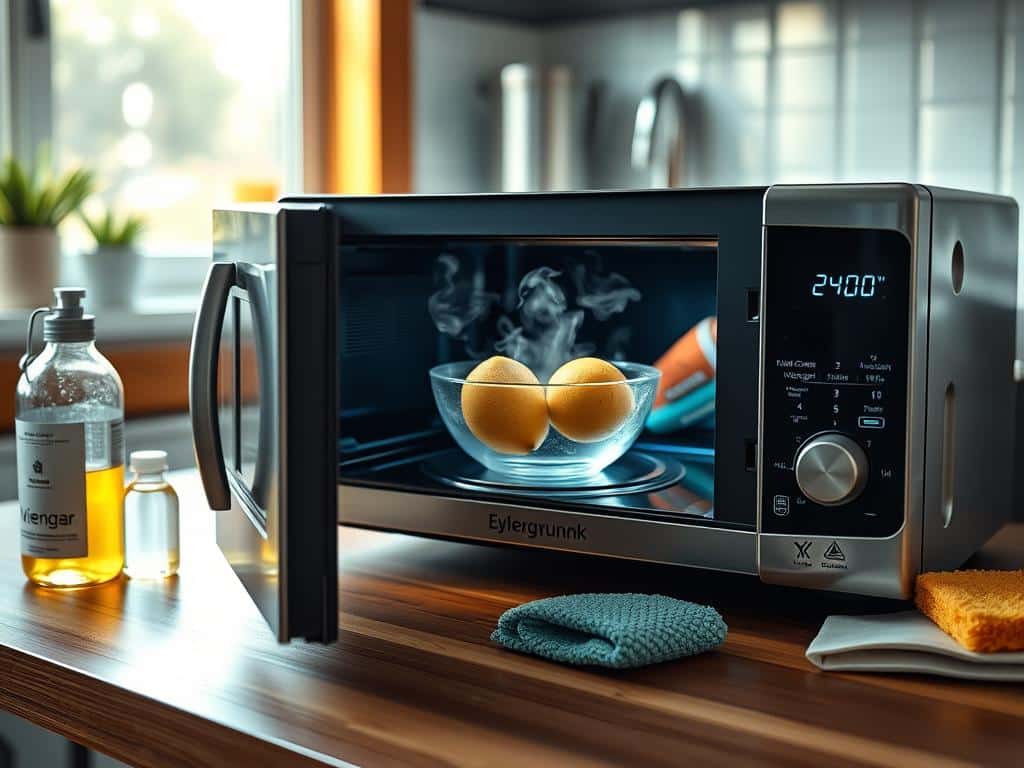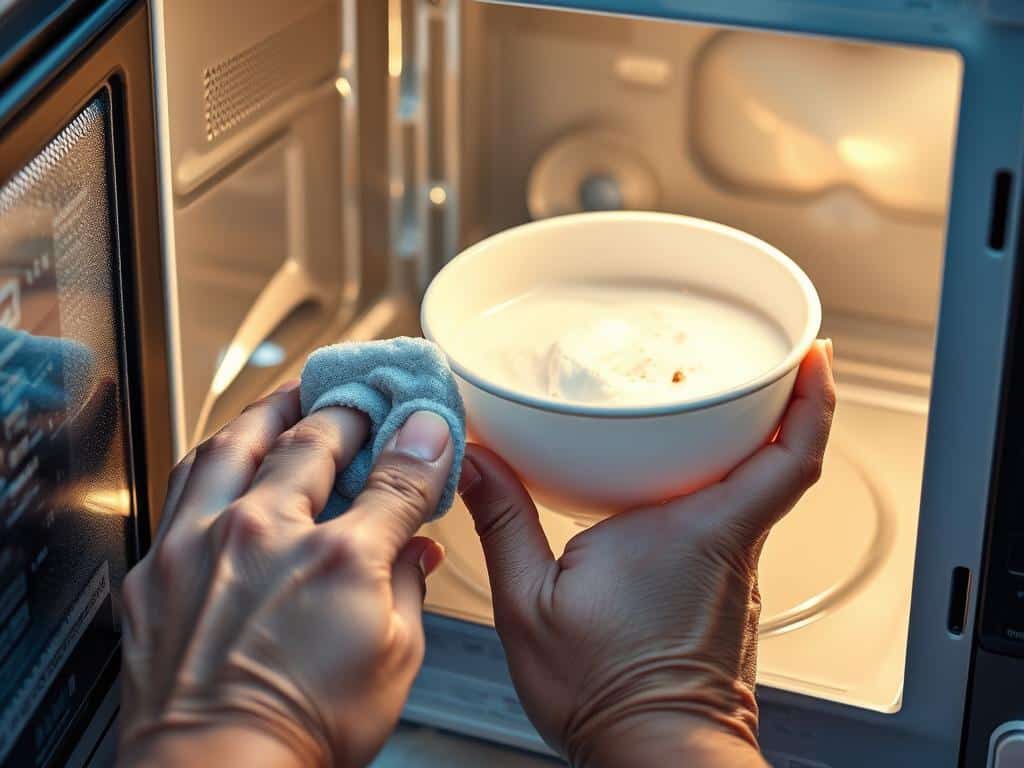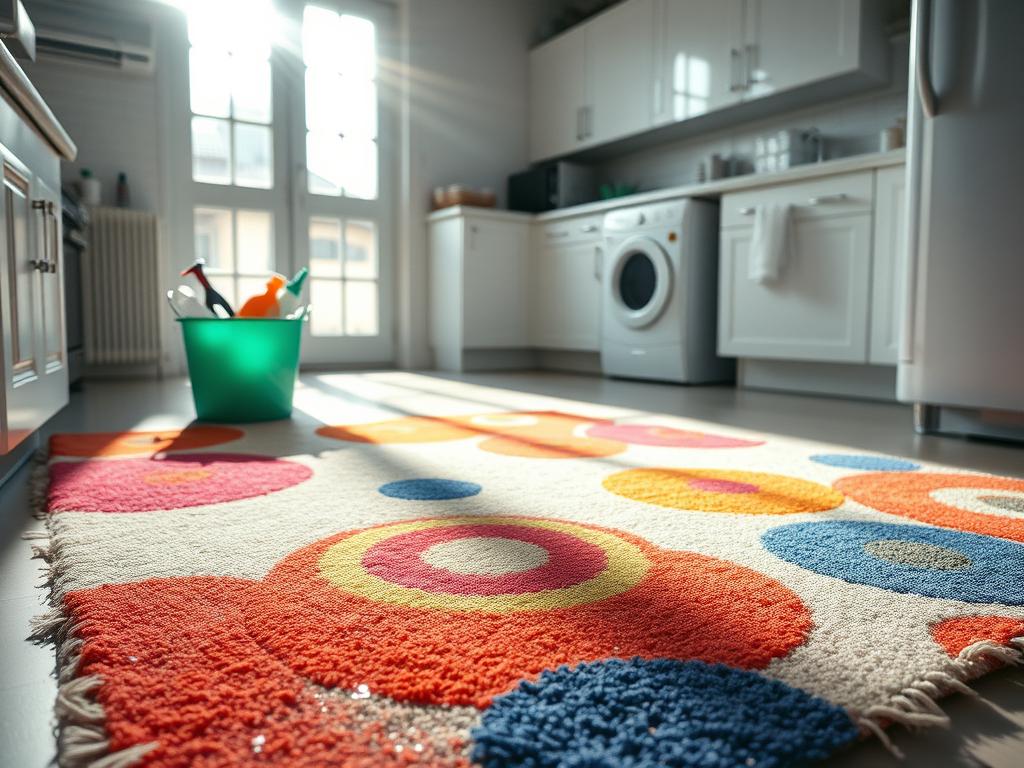
Microwaves are a staple in modern homes, yet they often go uncleaned, leading to buildup and bacteria that can compromise both the appliance’s function and your health. In fact, over 48% of microwave handles and keypads were found to harbor harmful bacteria, underscoring the necessity of regular cleaning. This easy microwave cleaning guide outlines a simple five-step process to maintain microwave hygiene using household items like vinegar, lemon juice, and baking soda. Following these steps will not only ensure the cleanliness of your microwave but also extend its longevity. Let’s dive into this straightforward method for effective microwave maintenance.
Cleaning experts at Molly Maid recommend cleaning your microwave at least once a week. Using natural cleaners such as vinegar and baking soda is highly effective. For an added bonus, incorporating essential oils can give your microwave a pleasing scent. Over time, regular cleaning habits and using these natural cleaners will keep your appliance in top shape while also promoting household cleaning tips that are eco-friendly.
Before we start, you should know that you can click here for tips on maintaining other appliances. Now, let’s get started on achieving a spotless microwave!
Preparation and Supplies
Before diving into the cleaning process, it’s crucial to gather all the necessary items. Having a well-organized cleaning supplies list will streamline your efforts, making the task efficient and thorough.
Gathering the Necessary Supplies
To begin, prepare a microwave-safe container for the cleaning solutions. Essential items include water, dish soap, a soft cloth or sponge, and optional natural cleaners like vinegar, lemon juice, and baking soda. These microwave cleaning essentials should be readily available to ensure a smooth cleaning process.
- cleaning supplies list consists of:
- Microwave-safe container
- Dish soap
- Soft cloth or sponge
- White vinegar
- Lemon juice
- Baking soda
will simplify and enhance your cleaning routine.
Incorporating natural cleaning agents not only provides effective results but also ensures a safer and more environmentally friendly approach. For instance, a solution of 2 tablespoons of white vinegar mixed with 2 cups of water is highly recommended for the microwave interior. Alternatively, 1 lemon’s juice combined with 1 cup of water serves as another great natural solution.
Here’s a detailed list of the supplies and their uses:
| Supplies | Uses |
|---|---|
| Microwave-safe container | Holds cleaning solutions |
| Water | Base for cleaning solutions |
| Dish soap | Cleans and degreases surfaces |
| Soft cloth or sponge | Wiping and scrubbing interior and exterior |
| White vinegar | Removes stains and disinfects |
| Lemon juice | Eliminates odors and greases |
| Baking soda | Deodorizes and scrubs tough stains |
Implementing these microwave cleaning essentials ensures a comprehensive approach, leaving your microwave spotless and odor-free. Frequency-wise, it’s suggested to clean your microwave once a week, but if your microwave sees more frequent use, cleaning it more often is advisable. For commercial settings, weekly cleanings are mandatory, with some areas requiring daily maintenance.
Cleaning the Microwave Interior
Maintaining a clean microwave interior ensures efficient performance and hygienic food preparation. To tackle stubborn grime removal and effectively sanitize your microwave, follow these simple steps.

Using Vinegar and Water for Stubborn Messes
Begin the microwave interior cleaning process by combining equal parts water and vinegar in a microwave-safe container. Heat the mixture for about five minutes to create steam that softens stuck-on debris. This method is particularly effective for stubborn grime removal. After heating, leave the door closed for an additional few minutes to allow the steam to penetrate the mess.
Wiping Down with Dish Soap and Water
Once the steam has loosened the build-up, remove the container and use a soft cloth dampened with a mixture of water and dish soap to wipe down the interior surfaces. For effective sanitizing, ensure the cloth is slightly soapy. Pay special attention to the edges and corners where food particles often accumulate. This step is crucial for thorough *dish soap cleaning* and eliminating any remaining grease and grime.
According to Weiss, it’s essential to clean your microwave daily with a damp cloth to remove crumbs and spills, preventing them from becoming difficult to remove later. Comprehensive, deep cleaning should be done once a week, as suggested by Weiss, while Mock recommends monthly cleaning.
Drying the Interior
After wiping down with the soapy cloth, use a lint-free cloth to dry the interior completely. Moisture left in the microwave can cause further grime build-up and affect the appliance’s performance. Repeat these steps regularly to keep your microwave in optimal condition. For more guidance on effective cleaning and maintenance, you can refer to expert advice on how to clean a microwave.
For additional detailed instructions on cleaning processes and timelines, particularly for household appliances like air ducts, consider exploring comprehensive guides on air duct cleaning timelines. Regularly maintaining both your microwave and other home appliances can significantly improve their lifespan and your household’s overall air quality.
How to Clean a Microwave Turntable
Microwave turntables are subjected to the brunt of spills and splatters, making regular microwave turntable maintenance crucial. Allow the turntable to cool completely before cleaning to prevent thermal shock. This step is especially important as sudden temperature changes can crack the glass.
- Hand Wash: Use warm soapy water and a non-abrasive pad for effective cleaning microwave glass. Ensure no food residues are left on the turntable.
- Dishwasher Use: If your turntable is one of the dishwasher-safe microwave parts, you can place it in the dishwasher for a more thorough cleaning. Most KitchenAid® microwave models, such as the KMHC319EWH and KMHP519ESS, feature dishwasher-safe microwave parts.
- After Cleaning: Dry the turntable completely before placing it back in the microwave. This ensures optimal microwave performance and longevity.
To maintain a clean microwave and avoid hard-to-remove stains, it’s recommended to clean the turntable about once a week. This routine microwave turntable maintenance helps prevent the hardening of spills and makes your cleaning tasks much more manageable.
Cleaning the Microwave Exterior
Maintaining the exterior of your microwave is essential for preserving the look of your aesthetic kitchen appliances and ensuring good hygiene. To begin with, enable the control lock feature to prevent accidental operation. Next, ensure you have your cleaning supplies on hand, such as dish soap, multipurpose cleaner, or a cleaning spray suited for the appliance’s material.
Start by applying a small amount of dish soap on a damp cloth and gently wiping down the microwave’s outer surfaces. This method effectively manages grease removal and addresses fingerprint smudges that commonly appear on stainless steel models. For additional cleaning power, you may use a cleaner like Dawn® Platinum, which is excellent for breaking up grease and tough stains.
Once you’ve tackled the grease removal, proceed to use a soft, dry cloth to eliminate any residual cleaning product. This final step in the microwave exterior upkeep process helps restore the shine and maintains the appliance’s pristine appearance. By consistently maintaining the microwave’s exterior, you contribute to the overall tidiness and appeal of your kitchen environment.
Conclusion
Incorporating a regular cleaning routine for your microwave is an essential aspect of effective appliance care. As Vera Peterson from Molly Maid states, “Microwaves normally have a lifespan of about five to 10 years depending on the quality of care.” This guide provided you with actionable steps to maintain your microwave, ensuring both its longevity and your family’s kitchen hygiene.
By following these effective cleaning routines, you not only enhance your microwave’s performance but also uphold the appliance’s sanitation. Whether it’s using a solution of water and vinegar to tackle stubborn messes or wiping down the exterior for a pristine look, every small effort contributes to a cleaner and safer kitchen. Remember, “Fresh spills are much easier to clean up compared to baked-on messes,” so immediate attention to spills can save you time and effort in the long run.
Kitchen hygiene doesn’t end with a clean microwave. Implementing these preventive cleaning approaches, such as covering food to avoid splatters and cleaning microwave filters every three to six months, will maintain a clean, efficient appliance. Aim to clean your microwave once per month to ensure it remains odor-free and operates efficiently. Embrace these microwave cleaning conclusions for a healthier, more pleasant kitchen environment.



